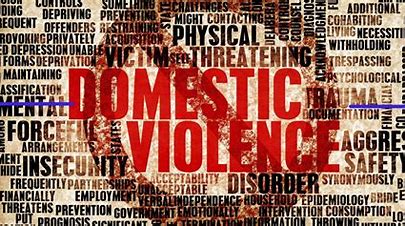Published in Capital City Hues, October 17, 2022
 I was intrigued when I heard about the new study in Wisconsin that had attempted the difficult task of putting a dollar amount to the cost of domestic violence. Difficult because we know many cases go unreported and we just can’t assess what we don’t know. The report was released last month by the Sojourner Family Peace Center and The Jamie Kimble Foundation for Courage. Still, I was curious as to what data was used, how the data was quantified and how a financial assessment was made.
I was intrigued when I heard about the new study in Wisconsin that had attempted the difficult task of putting a dollar amount to the cost of domestic violence. Difficult because we know many cases go unreported and we just can’t assess what we don’t know. The report was released last month by the Sojourner Family Peace Center and The Jamie Kimble Foundation for Courage. Still, I was curious as to what data was used, how the data was quantified and how a financial assessment was made.
Even Dr. Erin Schubert who co-authored the study was initially reluctant to view domestic violence from an economic perspective. Schubert is the director of outcomes and evaluation at Sojourner Family Peace Center in Milwaukee. The Center is the largest agency in Wisconsin that provides domestic violence services. It has been around since 1975 so it knows a lot about this issue.
Dr. Schubert relented, believing that identifying the costs for policymakers and lawmakers could be a motivating factor that moves them to make changes — or at least, deepen the public discourse of domestic violence from new angles. I agree.
Abolitionists for the death penalty adopted a similar tactic when years of exposing the racist nature of the death penalty and of showing the death penalty had no impact on the decrease in homicides continued to fall on death ears. Neither the traumatic childhoods of defendants nor the immorality of state-sanctioned murder touched the humanity of public officials. Calculating the high cost of death penalty cases over decades of appeals on struggling state budgets did seem to get the attention of some public officials. The number of highly publicized cases on wrongful convictions also helped to make the case that the death penalty was not the most effective tool in the justice toolbox.
The Wisconsin study looked at the estimated costs of $657 million last year due to domestic violence, over $113 million was attributed to Milwaukee County. The calculations included lost worker productivity, physical and mental healthcare costs, policing and court expenses and costs associated with shelters and other resource centers.
Milwaukee, the state’s largest urban center, has seen a dramatic increase in crimes related to domestic violence in the last few years. Domestic violence homicides increased by 400 percent from 2018 to 2020. The pandemic didn’t help as I’ve written in these columns. Stress from being at home and the financial troubles from not working put many people over the edge.
What wasn’t included in the report from what I could tell were rape statistics. That would’ve sent the costs into the stratosphere. Here again, rape is also a crime that is woefully under-reported, especially between intimate partners.
Under the Loss of Life category in the study, I don’t think the report included costs for funerals, including family members and friends having to travel.
In 2022, I still hear people condemn the women who stay in abusive situations, believing that it is easy to pick up and leave. Often, the woman is blamed for staying to encounter more abuse and putting her children in danger.
Because the phenomenon of domestic violence is so personal, most find it challenging to intervene or play some kind of proactive role. The loss of life and the diminished quality of life is unacceptable in our civilized society and therefore worthy of serious attention and action. The study is a critical piece to deepening our collective understanding about intimate partner violence from many perspectives and its effect on our humanity and our pocketbooks.



